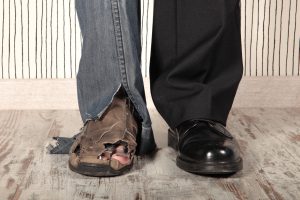In-Work Poverty and the Challenges of Getting By Among the Young
October 18, 2021

The International Day for the Eradication of Poverty is observed on 17 October each year to recognize the daily struggles of people living in poverty. Poverty is more than just an economic issue. Unsanitary housing conditions, lack of access to nutritious food and healthcare, and exposure to dangerous work environments are usually intertwined with insufficient income.
Concern over poverty and inequality in Singapore has grown in the past few years. With rapid technological changes and disruptive innovations, economic insecurities for workers in traditional low-waged jobs and in the gig economy are rising. Although governmental assistance such as Workfare and ComCare Short-and-Medium Term Assistance are available, many of the young working poor (YWP)–aged between 21 and 40–slip through the cracks as they are below the eligible age or above the household income ceiling for such programmes. The Social Science Research Thematic Grant-funded research project ‘In-Work Poverty and the Challenges of Getting By Among the Young’, led by Associate Professor Irene Ng (NUS Social Service Research Centre (SSR) and Department of Social Work) seeks to understand how programmes for the YWP can be better designed.
The research team explores the lived realities of the YWP in Singapore through surveys, interviews, ethnographic studies, and data inputs using a mobile application. The study considers four types of poverty suffered by the YWP, including monetary poverty and time poverty. There is also a focus on young workers’ mental health and cognitive ability across gender and race, and how they use their social networks to navigate jobs, family, and advancement.
The insights gained from the project will inform policymakers and service agencies on improving the reach and design of formal programmes for younger low-wage workers, and leveraging on the YWP’s social networks as a resource to help themselves.
Read more about the team’s research on the SSR’s website here, and in the their magazine, Snippet, here.
